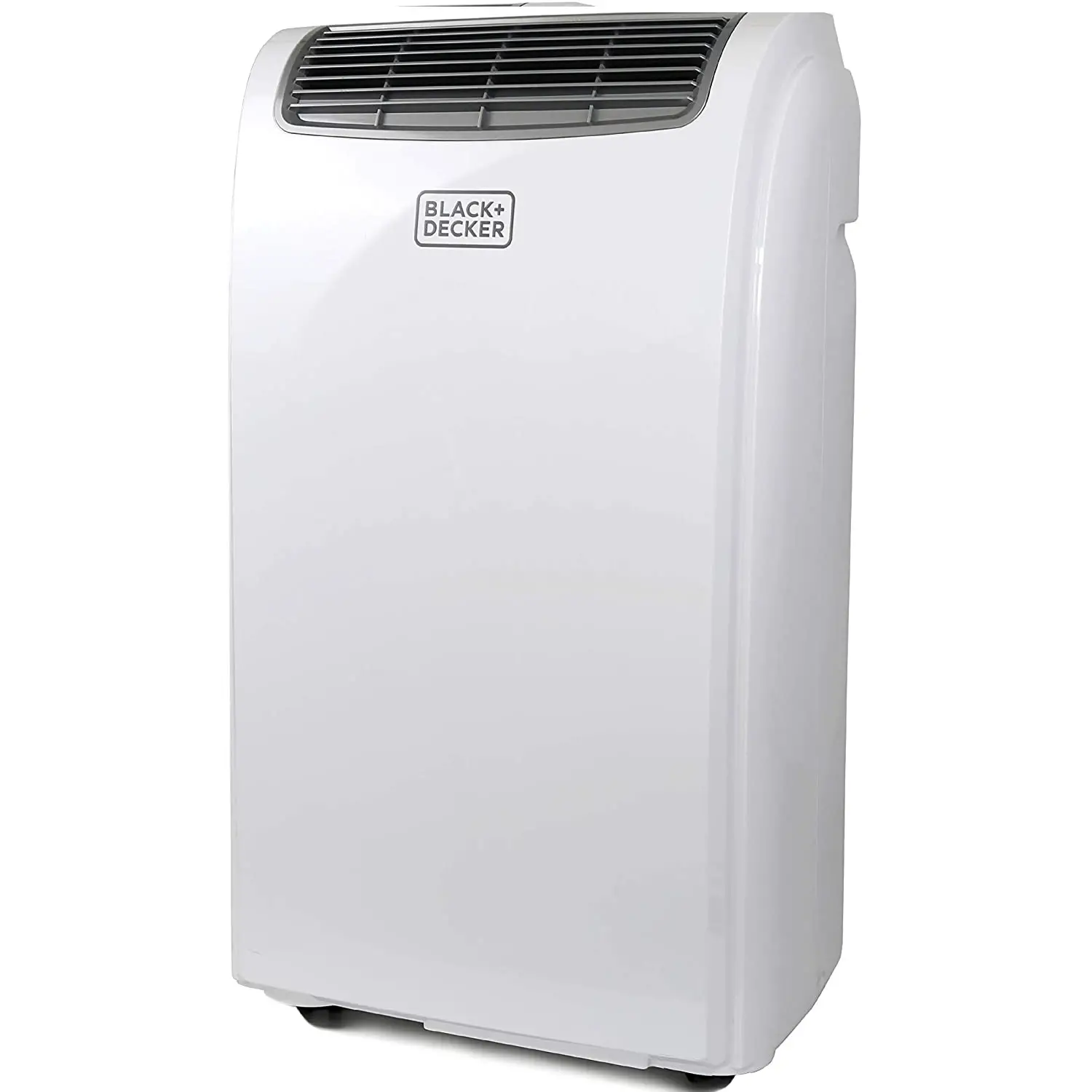
- Brand BLACK+DECKER
- Color White
- Item Weight 26 Pounds
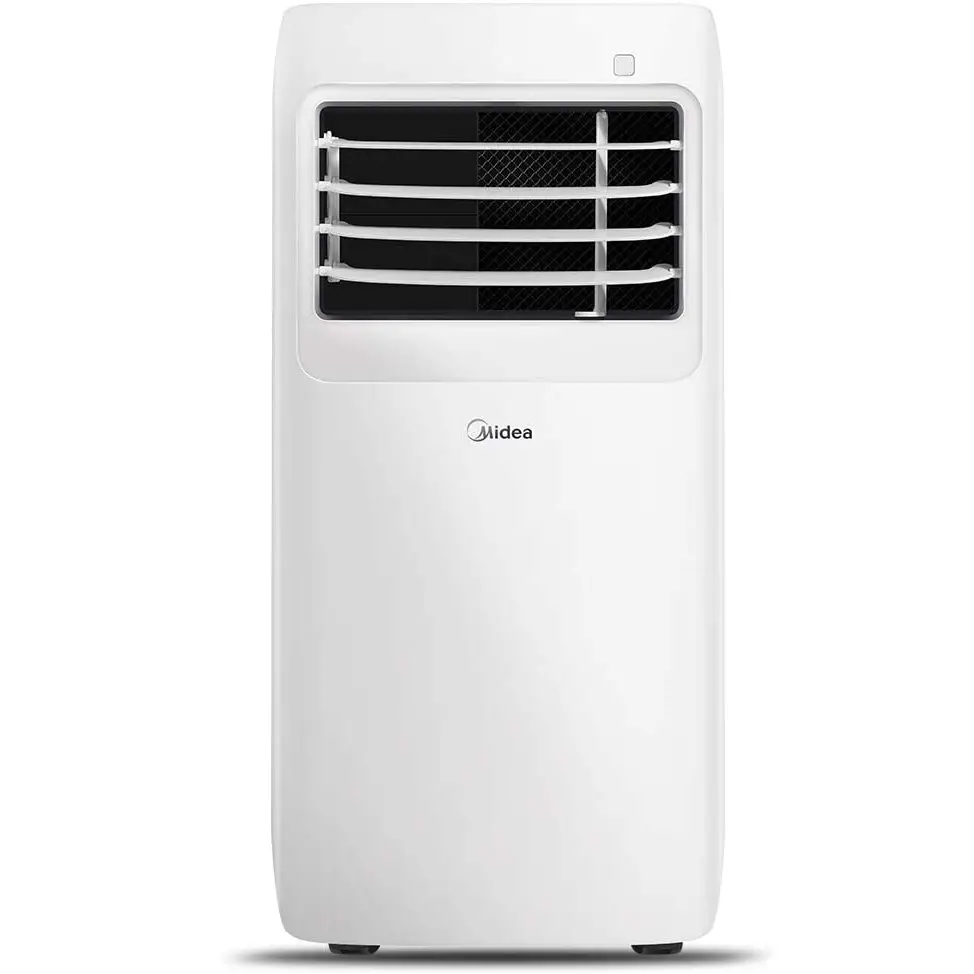
- Brand Midea
- Item Weight 59.9 pounds
- 13 x 17.1 x 28.3 inches
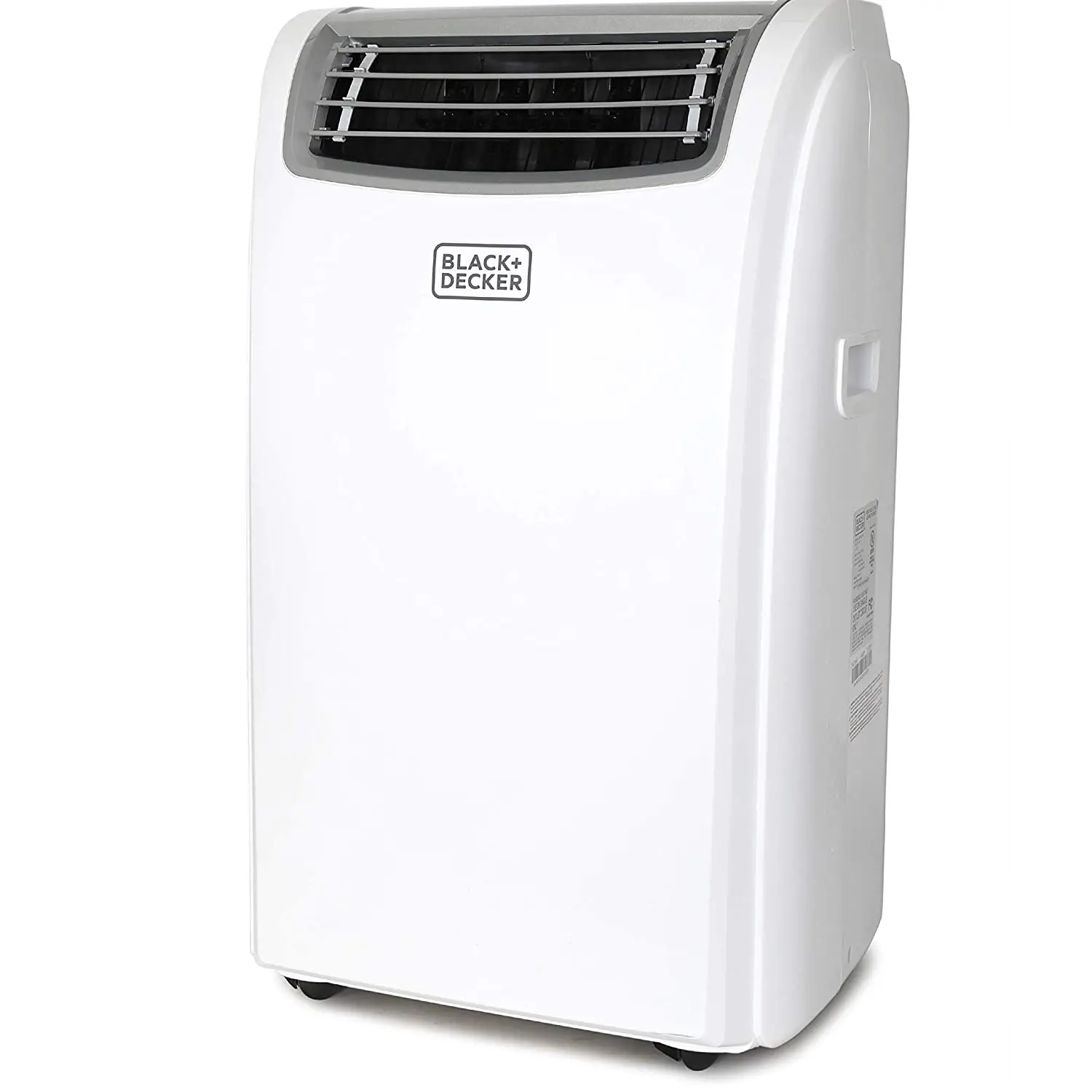
- BLACK+DECKER
- Item Weight 35 Pounds
- Color White
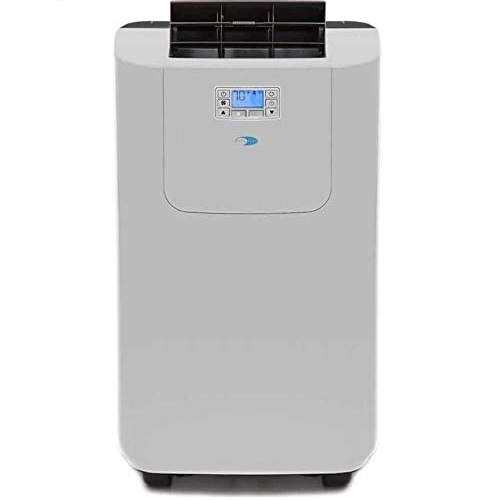
- Brand Whynter
- Color Multicolor
- 17 x 29.5 x 16 inches
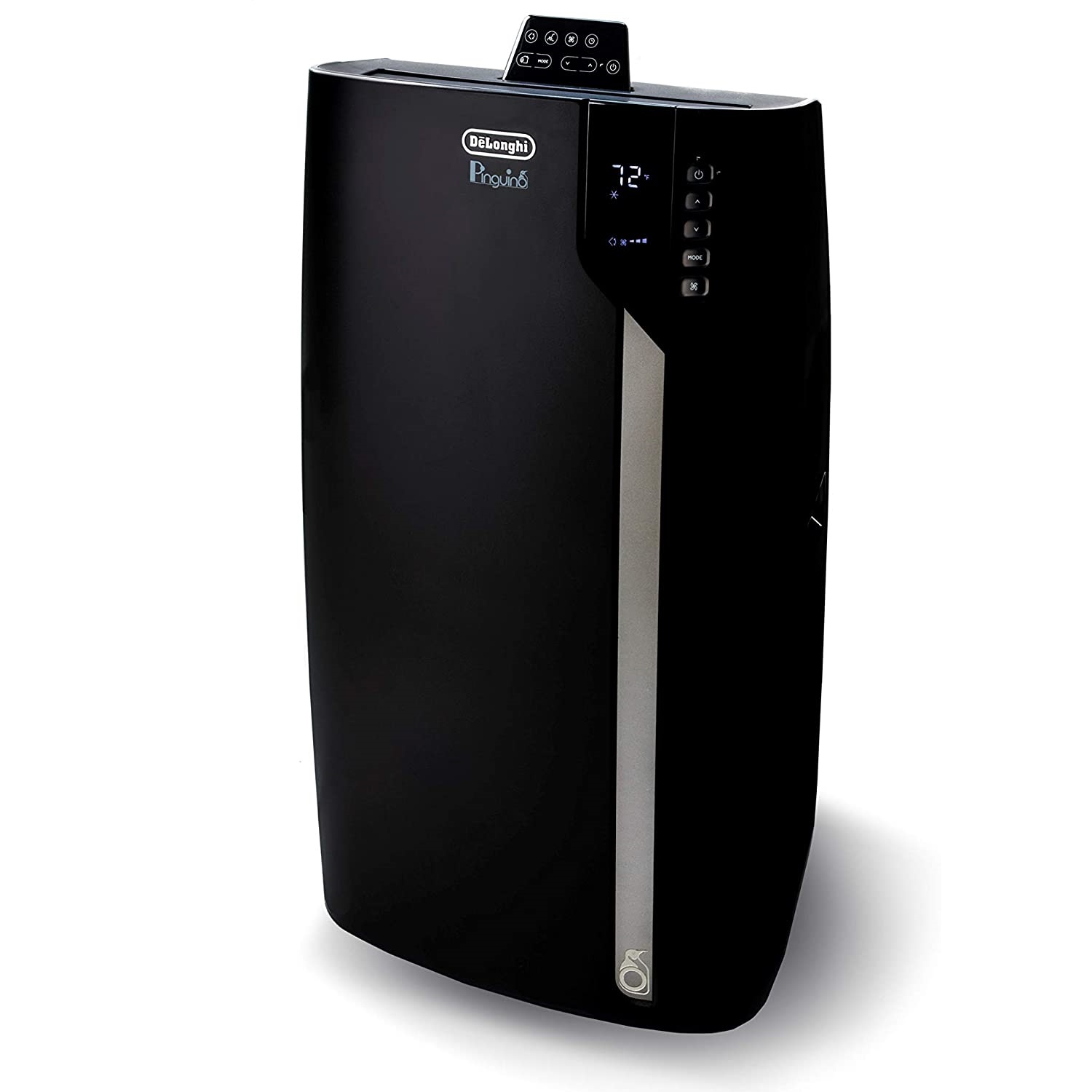
- Brand DeLonghi
- Color Black
- Item Weight 83 Pounds
Choose the Best Portable Air Conditioner for RV
Customer’s Choice: the Best Rated Portable Air Conditioners for RV
4 users answered this survey. Please help us improve this review!
Summertime is a great time of year, but it can also be quite hot. If you’re someone who likes to travel in an RV during the summer, then you know that it can get quite uncomfortable when the temperatures start to climb. A portable air conditioner is a great way to keep cool while on the road. In this blog post, we will discuss some of the best portable air conditioners for RV use. We’ll also provide some tips on how to choose the right one for your needs.
Table of Contents
BLACK+DECKER BPACT10WT
 The BLACK+DECKER BPACT10WT is perfect for small spaces. Its 24-hour timer prevents waste and saves you money, while the Sleep Mode auto-controls the air temperature at night.
The BLACK+DECKER BPACT10WT is perfect for small spaces. Its 24-hour timer prevents waste and saves you money, while the Sleep Mode auto-controls the air temperature at night.
MIDEA MAP08R1CWT Portable Air Conditioner
 Looking for a reliable, energy-efficient way to cool your space? Look no further than the MIDEA MAP08R1CWT. Louver’s 8,000 BTU portable air conditioner is the perfect way to keep your room cool this summer.
Looking for a reliable, energy-efficient way to cool your space? Look no further than the MIDEA MAP08R1CWT. Louver’s 8,000 BTU portable air conditioner is the perfect way to keep your room cool this summer.
BLACK+DECKER BPACT14HWT
 The Black + Decker 14,000 BTU air conditioner and heater are perfect for dorms or apartments. With its 7 700-BTU capacity (14 000 ASHRAE) it will keep you cool during the summer months while heating up to 81 degrees Fahrenheit in wintertime!
The Black + Decker 14,000 BTU air conditioner and heater are perfect for dorms or apartments. With its 7 700-BTU capacity (14 000 ASHRAE) it will keep you cool during the summer months while heating up to 81 degrees Fahrenheit in wintertime!
Whynter Elite ARC-122DS
 Introducing the Whynter Elite ARC-122DS – winner of Good Housekeeping’s “Best Portable Air Conditioners to Buy in 2019” and The New York Times Wirecutter’s “most efficient and fastest cooling portable AC.” This 12,000 BTU (ASHRAE) / 7,000 BTU (SACC) unit can cool up to a 400 square feet space, making it perfect for large rooms, bedrooms, or home offices.
Introducing the Whynter Elite ARC-122DS – winner of Good Housekeeping’s “Best Portable Air Conditioners to Buy in 2019” and The New York Times Wirecutter’s “most efficient and fastest cooling portable AC.” This 12,000 BTU (ASHRAE) / 7,000 BTU (SACC) unit can cool up to a 400 square feet space, making it perfect for large rooms, bedrooms, or home offices.
De’Longhi 14000 BTU Portable Air Conditioner
 This portable AC unit was designed with you in mind. Stay cool and comfortable without disturbing those around you.
This portable AC unit was designed with you in mind. Stay cool and comfortable without disturbing those around you.Buyer’s Guide
Advantages and Disadvantages of Portable Air Conditioners for RV
Like any product, portable air conditioners for RV have their pros and cons.
First, let’s discuss the advantages:
- Portable air conditioners are easy to install and use. They typically have a window kit that you can use to attach the unit to your RV’s window. The kit includes all the necessary adapters and hardware.
- Portable air conditioners are very efficient. They use less energy than a traditional air conditioner, so you can save on your electric bill.
- Portable air conditioners are compact and lightweight, making them easy to transport.
- Portable air conditioners are relatively affordable, making them an economical option for cooling your RV.
Now let’s take a look at the disadvantages:
- Because they rely on evaporative cooling, portable air conditioners can be less effective than traditional air conditioners in hot, humid climates.
- Portable air conditioners can be noisy when in operation.
- They also require regular maintenance to keep them running effectively.
Overall, portable air conditioners are a great option for cooling your RV during the summer months. They are efficient, compact, and affordable, and they offer a number of advantages over traditional air conditioners. So if you’re looking for an easy and affordable way to cool your RV, a portable air conditioner is the perfect solution.
Types of Portable Air Conditioners for RV
- The most popular type is the window unit, which you can install in your RV’s window. These units tend to be bulky and heavy, but they do offer the advantage of cooling down a large space quickly. If you don’t have room to install a window unit, you can purchase a portable air conditioner that sits on the floor. These units are much smaller and lighter, but they don’t cool down as quickly or effectively as window units.
- Another option is to buy a rooftop air conditioner for your RV. This type of unit mounts on top of your RV and blows cold air down inside. Rooftop air conditioners are the most efficient type of portable AC, but they can be expensive and difficult to install. They also take up a lot of space, so they may not be ideal for smaller RVs.
- One more option is to buy a portable evaporative cooler. These units use water to cool the air, so they don’t work as well in humid climates. However, they are much cheaper than other types of portable ACs. Moreover, they don’t require any installation, making them a good choice for people who are renting an RV.
So which type of portable AC is right for you? It depends on your needs and budget. If you need a unit that can quickly cool down a large space, then a window unit is the best option. If you’re looking for an affordable option that can be easily moved from one RV to another, then an evaporative cooler is the way to go. And if you have the money and want the most efficient and effective portable AC, then a rooftop air conditioner is the best choice.
No matter which type of portable AC you choose, make sure to read the reviews before you buy. That way, you can be sure that you’re getting a unit that will meet your needs.
Things To Consider When Choosing The Best Portable RV Air Conditioner
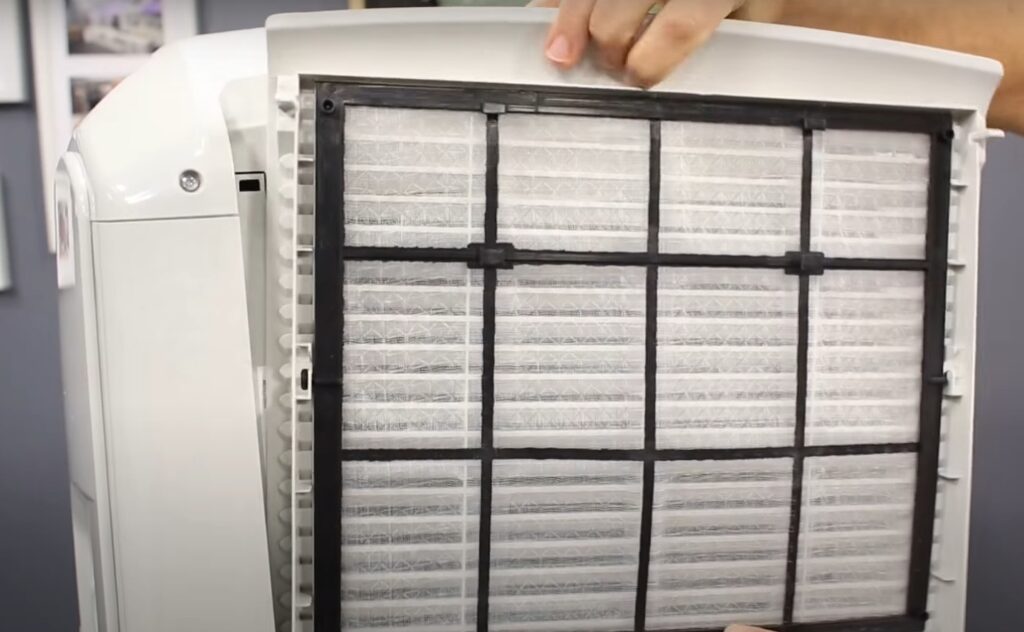
The most popular type of air conditioner for RVs is the portable model. These are small, lightweight units that can be easily moved from one spot to another. They’re also very affordable, making them a great option for those on a budget.
However, it is not so easy to find the best portable air conditioner for an RV. There are many things you should take into account before making your purchase. So, what are the most important factors to consider?
Size Matters
The first thing you need to think about is the size of the unit. It needs to be small enough to fit in your RV, but big enough to cool down the space adequately. You don’t want an air conditioner that just chills one small area – you want one that will cool the entire space.
Size is also important because you don’t want to be carrying around a huge, heavy air conditioner.
Usually, the size is affected by the power of the unit. The bigger the air conditioner, the more power it will need.
But don’t worry – even though the size is important, there are a lot of great portable air conditioners on the market that are small and lightweight.
Size depends on many things, including the climate you live in. If you’re living in a hot, desert climate, you will need a more powerful air conditioner than someone who lives in a cooler area.
The best way to measure the size of your AC unit is by its height, width and depth. Make sure that it can fit into a window or other area without taking up too much space.
A smaller unit is usually preferable for RVs because it gives you more room to work with when trying to find an area that’s already crammed with existing appliances and furniture pieces. However, if your RV has ample space then there’s no reason not to go big! Just make sure that whatever air conditioning unit you choose fits into the spot where you have decided to place it before buying anything so as not to waste money on something too large or small which will inevitably need to be moved around during installation.
Size also depends on the number of people who will be using the RV. If there are more people, then you’ll need a bigger unit to cool everyone down.
When looking for a portable air conditioner, make sure to find one that is the right size for your RV. You don’t want an air conditioner that is too big or too small – it needs to be just the right size so that it can adequately cool down your space.
Cooling Capacity (BTUs)
The second consideration you’ll want to make is the cooling capacity of the AC unit. It is measured in BTUs, and it’s important to get one that can adequately cool your space. It is an important thing because an AC unit with too low of a BTU rating won’t be able to properly cool your RV, while an overly powerful one could lead to high energy costs.
When selecting the right BTU rating, it’s important to keep in mind the size and layout of your RV. If you have a larger space, you’ll need a higher BTU rating than someone with a smaller space. You’ll also want to consider the number and placement of windows and doors in your RV, as well as how much insulation it has.
Here are some general guidelines:
– For a space up to 225 square feet, choose an AC unit with a cooling capacity of 5000 BTUs or less
– For space between 226 and 350 square feet, choose an AC unit with a cooling capacity of between 5000 and 8000 BTUs
– For space between 351 and 450 square feet, choose an AC unit with a cooling capacity of between 8000 and 12000 BTUs
– For space between 451 and 550 square feet, choose an AC unit with a cooling capacity of between 12000 and 18000 BTUs
– For space larger than 550 square feet, choose an AC unit with a cooling capacity of more than 18000 BTUs
BTU determines how powerful the AC unit is and how big of an area it can cool. Moreover, the BTU rating can give you an idea of how noisy the AC unit will be. The higher the BTU, the louder the machine will be.
Generally, you’ll want an AC unit with a cooling capacity that is about 50% higher than the maximum heat load of your RV.
If you have a smaller RV, you’ll need a unit with a lower BTU rating; if you have a larger RV, you can go with a higher BTU rating.
It is important to note that because of the extra insulation and higher ceiling in an RV, you will need to increase BTUs by 30% over what is needed for a standard home.
Keep in mind that the above recommendations are just general guidelines. If you have any questions about what size AC unit would be best for your RV, don’t hesitate to contact us for help.
Portability
Portability is the third key feature to consider when purchasing an air conditioner for your RV. It is important to find an air conditioner that is easy to move around, especially if you plan on using it in more than one location.
You want to make sure that the unit you choose is easy to move around, whether you’re taking it from one room to another or packing it up and taking it with you on vacation.
Some of the smaller portable air conditioners are easy to move around, but others can be quite heavy. Be sure to read the specifications of the unit you’re interested in to find out how heavy it is.
Some portable ACs come with built-in wheels and handles for easy maneuverability, while others require you to carry them from place to place. Consider how often you’ll need to move the unit and choose accordingly.
However, even if your chosen air conditioner doesn’t have wheels, it’s still easy to move around. Many units come with carrying handles that make it easy to carry the unit from one spot to another.
If you frequently take your RV on long road trips, it might be a good idea to invest in a portable AC with built-in wheels and handles. That way, you won’t have to worry about carrying it around and can focus on enjoying your vacation.
When choosing a portable AC, be sure to consider its size and weight. If you know you’ll need to move it around a lot, choose a model that is lightweight and easy to transport.
Portability is also affected by the type of AC. Window-mounted and portable ACs are the easiest to move around, while split systems are the most difficult.
Window-mounted and portable ACs are the easiest to transport because they are easy to install. All you have to do is plug them in and start using them. Split systems are more difficult to move around because they require installation.
If you’re looking for an air conditioner that is easy to move around, choose a window-mounted or portable AC. If you don’t mind installing the unit yourself, a split system might be a good option.
Power compatibility
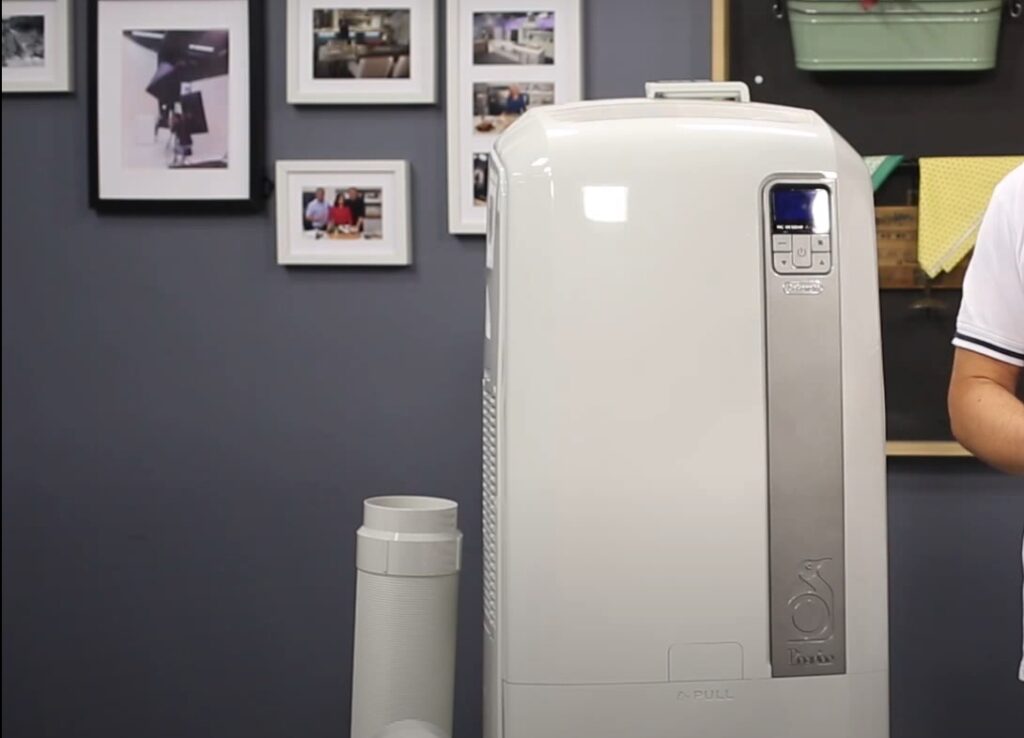
The next thing you need to consider when purchasing a portable air conditioner is whether it is compatible with your RV’s power source. It is important because you don’t want to purchase an AC unit that won’t work with your rig.
Most portable AC units require either 110 or 120 volts of electricity, so be sure to check the specs before making a purchase. If you have an older RV, it might not have a standard electrical outlet that a portable AC unit can plug into. In this case, you might need to purchase an adapter or converter in order to use the appliance.
If you are using an RV with a 12-volt electrical system, you will need to purchase a portable air conditioner that is designed for use with a low voltage. These units usually come with an inverter, which transforms the 12-volt power into the standard 110-volt outlet.
There are also some portable air conditioners that can be powered by a propane or diesel generator.
- Propane-powered air conditioners are a great option for RVs, boats, and cabins. They run on propane tanks instead of electricity, so they are perfect for use in remote locations. However, these units can be a little more expensive than electric-powered ACs.
- Diesel-powered air conditioners are perfect for use in large RVs and trucks. They provide a lot of cooling power, and they can run off either 12- or 24-volt systems. These units have the added benefit of being able to heat as well as cool, making them a versatile option for year-round use. However, they are also the most expensive option on this list.
Some portable AC units also come with a built-in generator, which can be helpful if you’re looking to avoid any extra purchases. In addition, you may be interested in generators for RV air conditioner review.
Portable air conditioners also come with different power cords. The most common is the three-pronged plug. However, some campgrounds only have outlets that accept two-pronged plugs. If this is the case, you will need to purchase a special adapter in order to use your AC unit.
Be sure to check the power requirements of any portable AC unit you are considering before making a purchase. If you’re unsure whether your RV is compatible with a certain type of portable air conditioner, don’t hesitate to contact the manufacturer or retailer for more information.
Power consumption
The power consumption of portable air conditioners for RV is also a key consideration. Some units use more power than others, and if you are using an RV air conditioner as your only source of cooling, you will want to choose a model that doesn’t consume too much power.
Some portable air conditioners for RV have a power consumption of around 800 watts, while others use up to 1500 watts. It’s important to choose a model that will work well with the electrical system in your RV.
Wattage affects not only the amount of power that the air conditioner uses but also how long it will take to cool down a room. So, if you are looking for a portable air conditioner with high wattage, make sure that you have enough available power to run it without causing an overload.
In addition, you should always read the manufacturer’s instructions to ensure that you are using your RV air conditioner in the most efficient way possible.
The right wattage is important, but it’s also crucial to make sure that you have the right size unit. A portable air conditioner that is too small for your RV will not be effective at cooling down the space.
On the other hand, if you choose a unit that is too large, it will use more power and may not fit properly in your RV.
Power consumption is also important because you don’t want your portable air conditioner to put too much of a load on your RV’s electrical system.
Remember to choose a model that has a low power consumption so that you don’t have to worry about running out of power while you are on the road.
Noise Output
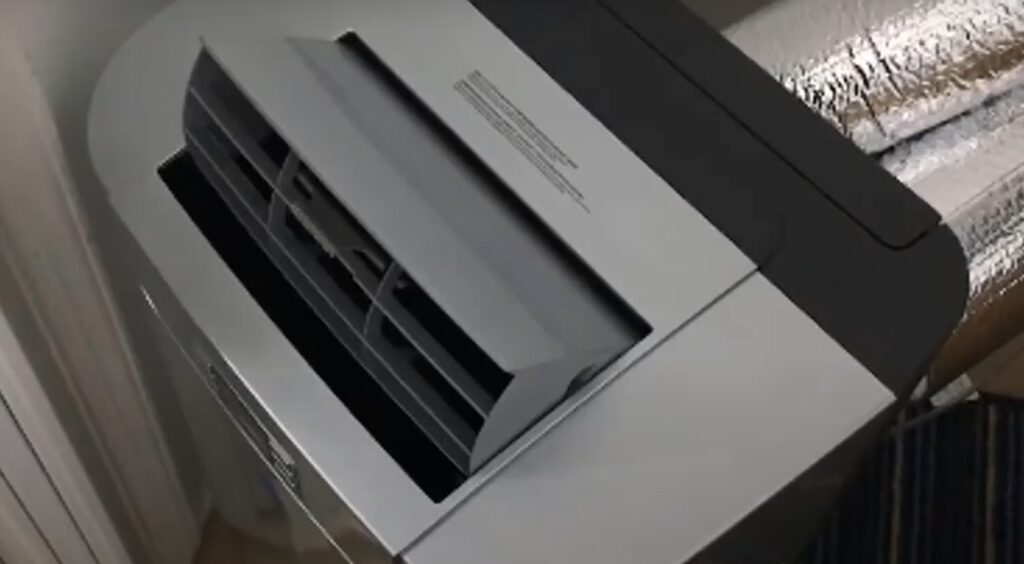
One thing to consider when purchasing a portable air conditioner for your RV is the noise output. Some units are much louder than others, so you’ll want to choose one that won’t disturb you or your fellow travelers.
This factor should be taken into account because you don’t want the noise from the air conditioner to drown out your conversations or keep you up at night.
Noise output is measured in decibels (dB), so be sure to compare the ratings of different units before making your purchase.
The most common noise levels are:
- 15-30 dB – It’s very quiet and you can barely hear it. It is like a light breeze. This level is also the sound of a normal conversation.
- 30-50 dB – This is the level at which you might start to feel some discomfort and would be considered moderate noise. This can include office chatter, traffic, or a dishwasher running.
- 50-70 dB – At this level, noise becomes more intrusive and can interfere with work or sleep. This might be the sound of a lawnmower, blender, or chainsaw.
- 70-90 dB – This is the level of noise that can cause pain and hearing loss if exposure is prolonged. This might be the sound of a jackhammer, ambulance siren, or rock concert.
- 90 dB+ – Anything above 90 dB can cause immediate pain and long-term damage to your hearing. This would include sounds like an airplane taking off or a gunshot.
Noise levels depend on the environment, so it’s important to measure the noise output of the unit you are considering in the space where it will be used.
Some portable air conditioners have a noise-reducing feature that can help lessen the sound emitted from the unit. If you are concerned about how much noise the air conditioner will make, be sure to check the specifications of the unit before you buy it.
Some camping sites are close to each other and you don’t want to be the one with the noisy AC running all day.
Vent position and number
Another consideration you’ll want to make is the position of the vent and how many you need. If your RV doesn’t have a lot of ventilation, you might only need one portable air conditioner. But if it has a ton of windows or is open to the great outdoors, you might need two or three.
Some people like to put their portable air conditioners in the windows, others like to put them in the door. It really depends on how much ventilation your RV has and how hot it gets inside.
Most RVs have one or two vents on the roof, which is perfect for a portable air conditioner. If you’re using more than one, it’s best to put them on opposite sides of the RV to create cross-ventilation.
The more you open “zones”, the lower the output power for any given zone. If possible, keep all the vents open to get the best airflow.
The downside with too many vent holes is that they allow for warm or even hot outside air while driving which can lead to condensation problems when not parked somewhere cool enough at night.
The position of the vent is important because it allows you to direct airflow where you want it — either in or out of the RV. If you have a lot of windows, you might want to direct the airflow out so that it cools down the inside of your RV. But if you’re using it in an area with no windows (like the bedroom), then you’ll want to direct the air in.
Remember: Portable air conditioners are designed to cool one area at a time. If you have more than one portable air conditioner, make sure each is cooling a different area.
Weight
The next consideration is weight. It is important because you don’t want an air conditioner that is too heavy to move around or travel with.
When it comes to weight, portable air conditioners tend to be on the heavier side. However, there are a few that weigh in at around 30 pounds or less. This is important to consider if you will be moving your RV often or traveling long distances.
Heavier models are obviously more difficult to move around, but they also tend to be more durable. If you plan on using your air conditioner regularly, it’s worth investing in a heavier model that will last longer.
Air conditioners can be heavy depending on their wattage. Some of the smaller air conditioners weigh as little as 20 pounds, while others can weigh up to 50 pounds. So make sure that they can easily fit into an area already containing appliances and furniture without having to worry about whether or not a large AC unit will work with your current setup.
Weight is also a consideration when it comes to the power of the unit. The heavier units usually have more power. Moreover, the more power a unit has, the faster it will cool down your RV.
Many things affect the weight of an air conditioner, such as the size of the unit, the type of refrigerant it uses, and the manufacturing process. For example, a portable air conditioner that uses the refrigerant R-410A will usually weigh more than one that uses R-22.
The size of the unit is also a consideration. A small, 14,000 BTU air conditioner is going to weigh less than a 30,000 BTU model.
Manufacturing processes also affect the weight of an air conditioner. For instance, a unit that is made with standard plastic housing will likely weigh less than one that is made with heavy-duty metal housing.
Material
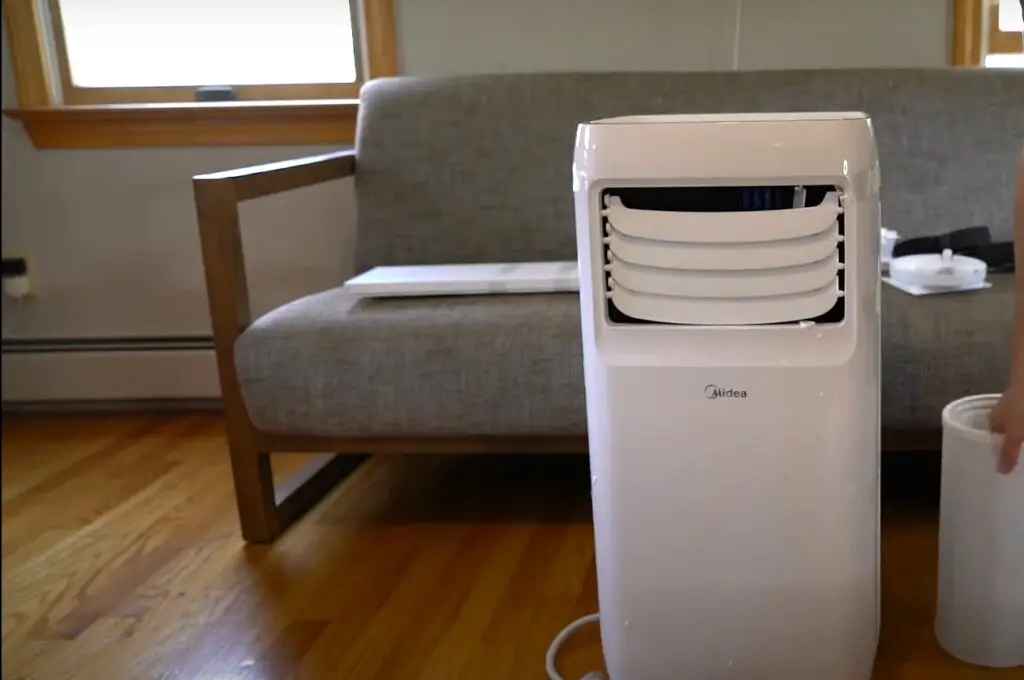
Another great thing about air conditioners is that they come in a variety of materials. The most common material for an air conditioner is plastic, but there are also metal and even some all-glass models on the market. When it comes to RVing, you’ll want to choose a model made from durable materials that can withstand the wear and tear of traveling.
- Plastic air conditioners are generally the least expensive and most lightweight option, but they can be less durable than other materials. They also tend to be less effective at cooling a space. If you’re looking for a budget-friendly air conditioner that won’t take up too much space, a plastic model is a good choice.
- Metal air conditioners are typically more expensive than their plastic counterparts, but they offer greater durability. They are also heavier, so they may not be the best option for smaller RVs. If you’re looking for an air conditioner that will last for years, a metal model is a good option.
- All-glass air conditioners are the most expensive and heaviest option, but they also have the highest cooling capacity. Moreover, they are the most aesthetically pleasing option, as they don’t have any visible external parts. If you want the best cooling performance and don’t mind paying a bit more, an all-glass air conditioner is a good choice.
Material affects more than just durability – it also affects noise levels. Plastic models are typically the noisiest, while metal and all-glass models tend to be quieter.
Before you choose an air conditioner, consider how you’ll be using it. If you need a portable model that can be easily moved from room to room, choose one made from lightweight materials like plastic. If you need a more durable air conditioner that will stay in one place, choose a model made from metal or all-glass.
Air purification and Airflow
One more important factor to consider when choosing an air conditioner for your RV is how well it can purify the air. If you are someone who suffers from allergies or asthma, you will want to make sure that the air conditioner is with an air purification system.
Some air conditioners have filters that can remove allergens and other particles from the air, while others have ultraviolet germicidal irradiation (UVGI) systems that kill bacteria and viruses. UVGI systems are especially important if you are traveling with pets or if there are children in your RV.
This way you can breathe easily even while traveling in your vehicle during hot summer days or inside without worrying about the quality of air around you. The unit also filters water which helps prevent mold growth that may lead to allergies later down the line. You should look for one with a carbon filtration system because it does a superior job at keeping the environment clean than any other filter type.
If you’re looking for an air conditioner that can keep you and your family healthy, make sure to choose one with a good air purification system.
Some air conditioners come with fans that create circular airflow, while others have directional airflow. Circular airflow is more beneficial because it distributes the cool air evenly throughout the room. Directional airflow is not as beneficial because it pushes the hot air to one side of the room, making it uncomfortable for people who are sitting on that side.
If you’re looking for an air conditioner with good airflow, make sure to choose one with circular airflow.
When cooling down larger vehicles like RVs during hot summer days you should opt for faster speeds because they more efficiently remove heat than lower modes. This way you save energy as well which is great considering some models are quite expensive to purchase in the first place.
This is an important feature of any RV air conditioner. You can use it to adjust airflow for different seasons or times of day, depending on your preferences and needs.
Basically, most units come with three fan speeds that you can choose from – low, medium, and high. The low setting is perfect for using when you want to save energy and the high setting is great for quickly cooling down a room.
Some air conditioners also come with a dehumidifier mode, which can be very helpful in humid climates or if you are trying to get rid of mildew or mold. Dehumidifiers work by pulling moisture out of the air, so they can be a great way to keep your RV feeling comfortable and dry.
Insulation strength
The next consideration is the insulation strength. It means that the portable air conditioner should be able to keep in the cold or heat. The better the insulation strength, the more efficient it will be at cooling down or heating up your RV.
The most important factor in an RV air conditioner is its ability to keep the cold air inside and the hot air outside. Look for an AC with a high R-value rating to ensure that it will be able to do this effectively.
Some models have an energy efficiency rating of over 15 while others are as low as six. It is important that you check this rating before purchasing a portable AC unit to ensure that you are getting the most bang for your buck.
Insulation strength is important for two reasons. The first reason is that it will keep the cold or heat inside of the RV. The better the insulation strength, the more efficient the AC unit will be at cooling down or heating up your RV.
The second reason is that an AC with a high R-value rating is likely to be more expensive than one with a lower rating. However, it is important to remember that the R-value rating is not the only factor you should consider when purchasing an AC unit.
Price
Last but not least, price is always an important factor to consider. You don’t want to break the bank when purchasing a portable air conditioner for your RV, but you also don’t want to sacrifice quality.
There are a few different price points to choose from when it comes to portable air conditioners. You can find some models for as little as $200, while others can cost upwards of $1000. Make sure you do your research and find the best deal possible.
There are a variety of affordable options on the market that will meet your needs without putting too much of a dent in your wallet. Be sure to do your research and compare prices before making a purchase.
The price depends on many factors, including the size of the unit and the features it offers. You should also consider any installation or shipping fees that may apply.
When shopping for a portable air conditioner for your RV, be sure to compare prices and find one that fits within your budget. There are a variety of affordable options available, so you’re sure to find one that meets your needs.
You can also find used or refurbished portable air conditioners at a fraction of the price. Just be sure to do your research and make sure you’re getting a quality product.
Anyway, you should always consider your budget when shopping for a portable air conditioner.
Comparison of Portable Air Conditioners for RV
Portable air conditioners are a popular choice for RV owners who want to stay cool and comfortable while on the road. This table compares various indicators of portable air conditioners specifically designed for RV use.
| Indicator | Description |
|---|---|
| BTU (British Thermal Units) | The cooling capacity of the air conditioner measured in BTUs. Higher values indicate a greater cooling power. |
| Cooling Area | The maximum area that the air conditioner can effectively cool. It is typically measured in square feet. |
| Energy Efficiency Ratio (EER) | A measure of the air conditioner’s efficiency in cooling. It represents the ratio of cooling capacity (BTU) to power input (Watts). Higher EER values indicate better energy efficiency. |
| Noise Level (dB) | The noise produced by the air conditioner during operation. It is measured in decibels (dB). Lower values indicate quieter operation. |
| Price Range | The approximate price range of portable air conditioners for RVs. |
This table provides an overview of different indicators to consider when selecting a portable air conditioner for an RV. These indicators include BTU, cooling area, energy efficiency ratio (EER), noise level, and price range. By understanding these indicators, RV owners can make an informed decision based on their cooling needs, energy efficiency preferences, noise tolerance, and budget.
FAQ
How do I cool down my RV?
There are a few ways to cool down your RV, but the best way is to use a portable air conditioner.
Can I use a portable air conditioner in my RV?
Yes. In fact, many people prefer to use them because they are more affordable than AC units that are built into RVs.
What is the best way to install a portable air conditioner in an RV?
The best way to install a portable air conditioner in an RV is to use the exhaust hose kit that comes with the unit. This will allow you to vent the hot air outside of your RV.
Can I use my portable air conditioner while I’m driving?
No, you should not use your portable air conditioner while you’re driving. It is not safe to use them while you’re on the road.
What is the best brand of portable air conditioner for an RV?
The best brand of portable air conditioner for an RV is likely a brand that specializes in cooling small spaces, like Dometic or Atwood.
What size portable air conditioner do I need for my RV?
The size of the portable air conditioner you need for your RV will depend on the size of your RV. You will likely need a unit that can cool down at least 400 square feet.
How do I clean my portable air conditioner?
You will need to remove the filter and wash it with soap and water. You can also use a vacuum cleaner to clean out any dust or debris from inside the unit.
How often do I need to replace my portable air conditioner’s filter?
You should replace your portable air conditioner’s filter every six months.
Can I use a portable air conditioner in my house?
Yes. However, you may need to purchase an adapter to connect the unit to your home’s AC outlet.
What is the best way to store my portable air condition?
The best way to store your portable air conditioner is to keep it in a dry place and make sure the filter is clean. You should also unplug the unit when it is not in use.
Are portable air conditioners energy-efficient for RVs?
Portable air conditioners can vary in energy efficiency, so it’s important to choose a model with a high energy efficiency rating. Look for units that are Energy Star certified, as they meet strict energy efficiency guidelines. Additionally, consider factors such as the size of your RV and the cooling capacity of the portable air conditioner to ensure optimal energy usage.
Do portable air conditioners require a venting system in an RV?
Yes, portable air conditioners require proper venting to function effectively. They produce hot air as a byproduct of the cooling process, which needs to be vented out of the RV. Most portable air conditioners come with an exhaust hose and window installation kit, allowing you to vent the hot air outside through a window or a specially designed vent in your RV.
Can I use a portable air conditioner in a pop-up camper?
Yes, portable air conditioners can be used in pop-up campers. However, since pop-up campers have soft walls, you need to make sure that the exhaust hose is properly sealed and insulated to prevent the escape of cool air and the entry of hot air. Proper ventilation is crucial to ensure the effective cooling of your pop-up camper.
Are there dual-hose portable air conditioners available for RVs?
Yes, there are dual-hose portable air conditioners designed specifically for RVs. Dual-hose models have two separate hoses: one for intake and one for exhaust. This setup helps to maintain a balanced air pressure within the RV and improves the overall efficiency of the portable air conditioner. Dual-hose units are especially beneficial in hot climates or for larger RVs.
Can a portable air conditioner dehumidify an RV?
Yes, many portable air conditioners have a built-in dehumidifier function. This feature helps to remove excess moisture from the air, making your RV more comfortable and reducing the risk of mold and mildew growth. If you frequently encounter high humidity levels in your RV, look for a portable air conditioner with a dehumidifier mode to keep the air dry and pleasant.
Can I use a portable air conditioner with a generator in my RV?
Yes, portable air conditioners can be used with a generator in an RV. However, it’s essential to ensure that the generator can provide enough power to meet the electrical requirements of the air conditioner. Check the manufacturer’s specifications for the portable air conditioner and consult the generator’s documentation to determine compatibility and wattage needs.
Are there portable air conditioners with heating capabilities for RVs?
Yes, there are portable air conditioners available with heating capabilities, commonly known as “heat pump” models. These units can provide both cooling and heating functions, making them suitable for year-round use in RVs. Heat pump portable air conditioners use a reverse refrigeration cycle to generate heat, allowing you to stay comfortable in colder weather as well.
Can I control a portable air conditioner for my RV using a smartphone?
Some portable air conditioners come with built-in Wi-Fi capabilities, allowing you to control and monitor them using a smartphone or a dedicated app. This feature enables you to adjust temperature settings, fan speeds, and other functions remotely, providing convenience and flexibility while you’re in your RV or even when you’re away.
Do portable air conditioners for RVs require regular maintenance?
Yes, regular maintenance is necessary for portable air conditioners in RVs. It’s important to clean the air filters regularly to ensure proper airflow and cooling efficiency. Additionally, check the exhaust hose for any obstructions or damage. Refer to the manufacturer’s instructions for specific maintenance guidelines, such as cleaning the condenser coils and emptying the condensate reservoir.
Useful Video: NewAir AC-10100E Portable Air Conditioner | Product Review | Tips for Staying Cool in Your RV
Final Thoughts
When it comes to air conditioners, there are a lot of different factors to consider. But by keeping the above things in mind, you can be sure to choose the perfect one for your needs. Whether you are looking for an energy-efficient model that can quickly cool down your RV or an air purifier that will keep you safe and healthy while on the road, there is sure to be a perfect option for you.
Do not forget to also consider the noise level of the unit before making your final decision. Some air conditioners are louder than others, and you will want to choose one that is as quiet as possible so that you can get a good night’s sleep without being disturbed.
Now you know what to look for, it’s time to find the best portable air conditioner for your RV.
We hope you found this guide helpful and that you have a cool and comfortable summer ahead!



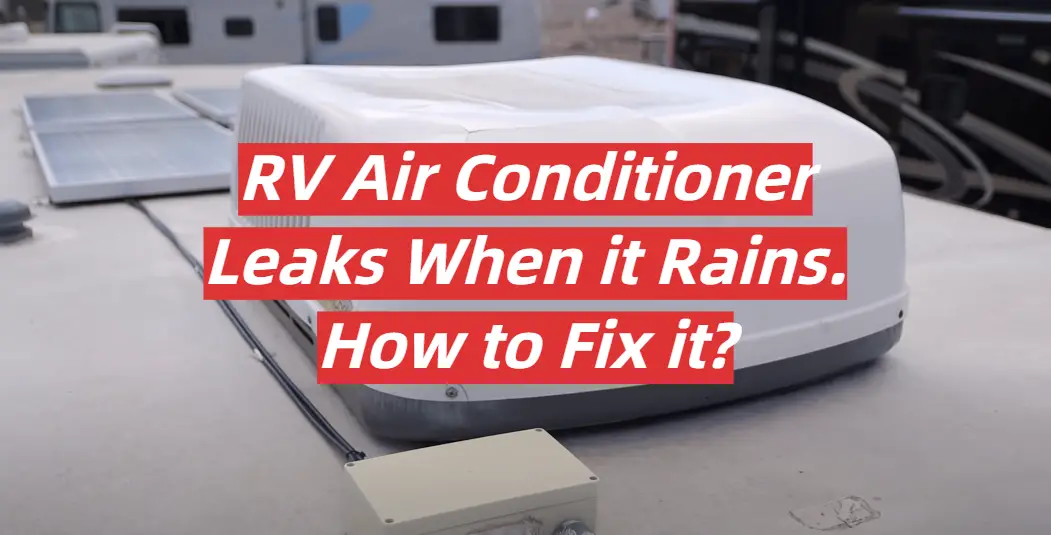
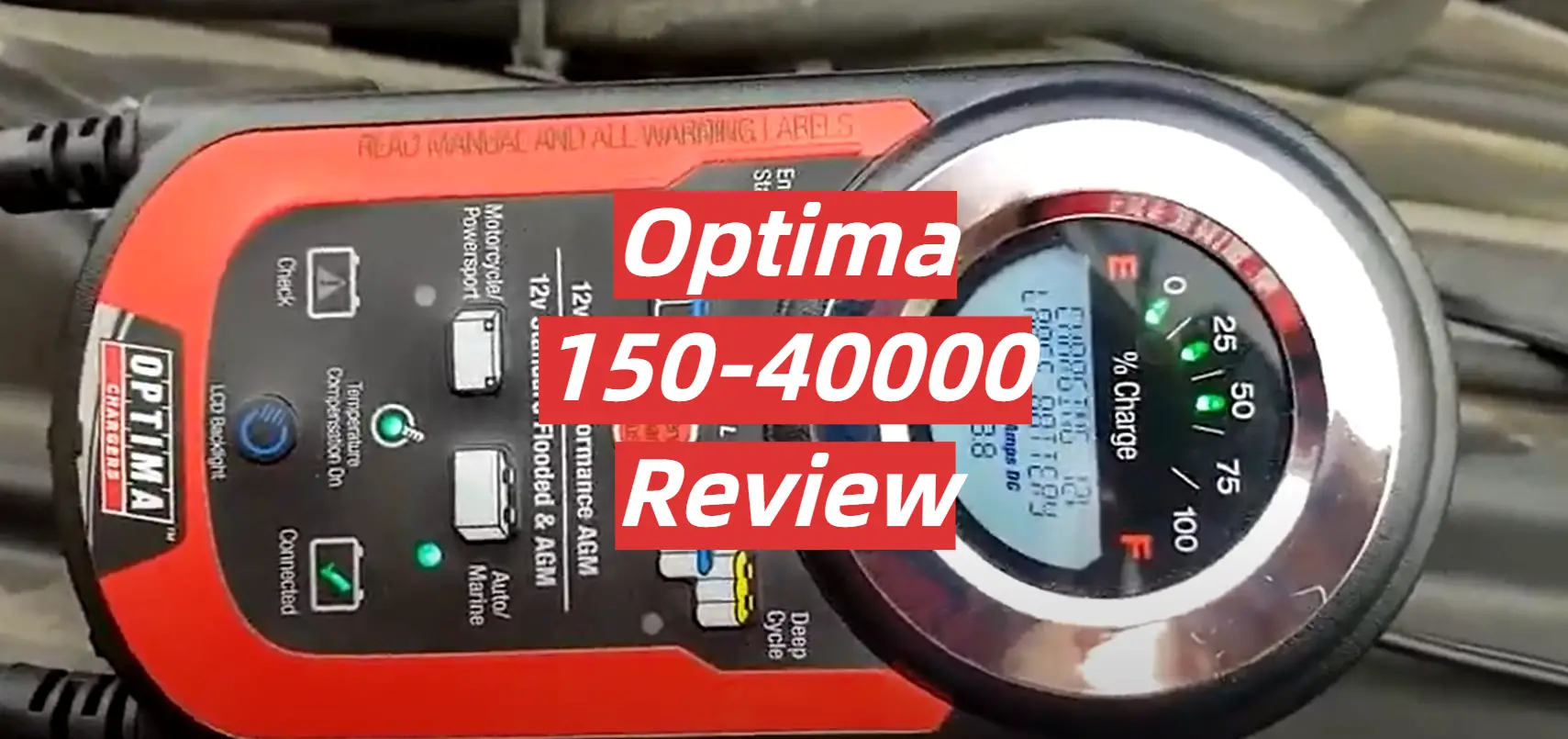

Leave a Reply